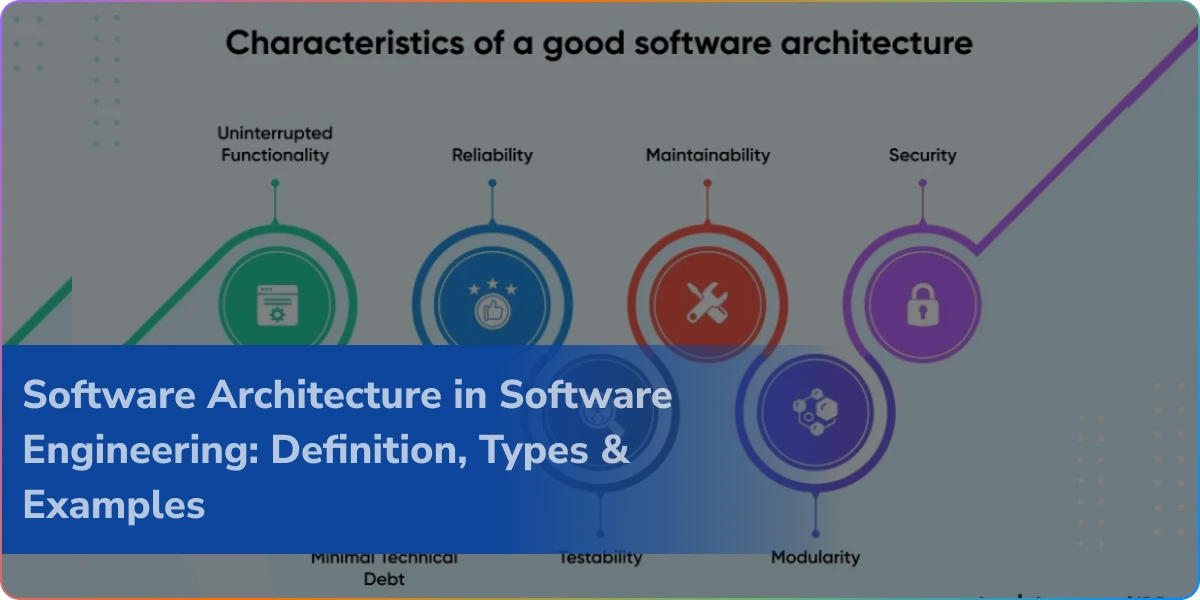In current web development, having a robust frontend framework paired with a scalable backend is essential. Coders typically have to decide between several tech stacks, but one of the top choices right now is React Python. If you want to develop dynamic, responsive apps with a reliable backend, pairing React with Python is a good option.
In this blog, we will guide you through some of the backend options for utilizing React Python, highlight the advantages and disadvantages of each, and guide you on how to backend with React efficiently. If you’re a developer or planning to hire React JS developers, this is surely a go-to guide for your journey.
Why Combine React with Python?
React is a JavaScript library that was built by Facebook and is popularly used to create fast, modern, and interactive user interfaces. Python is a general-purpose and easy-to-learn backend language that has frameworks such as Django and Flask to speed up web development as well as simplify it.
Pairing Python with React helps you:
- Take advantage of Python’s ease and robust backend functionality
- Use React’s performance-driven frontend for flawless user interaction
- Distinct concerns via a clean frontend-backend architecture
Whether you are working on a social platform, SaaS application, or e-commerce website, employing React JS with Django or React JS Flask provides you with flexibility and performance.
1. How Frontend and Backend Communicate
Before exploring individual Python backend frameworks, it’s crucial to know how to backend with React. In a complete full-stack React-Python setup, the frontend and backend communicate mainly through:
- REST APIs: The backend provides endpoints that the React app retrieves using HTTP requests.
- GraphQL APIs: Provide greater flexibility by enabling clients to fetch just what they require.
- WebSockets: Suitable for real-time usage such as chats or notifications.
2. Using React JS with Django
Why Django?
Django is a high-level Python web development framework that encourages rapid development and clean, pragmatic design. It’s ideal for scalable applications and has numerous built-in features such as authentication, admin panel, ORM, and security boosts.
Integration Approaches
The two main ways to employ React JS with Django are:
a. Decoupled Frontend and Backend (Separate)
- React manages the UI.
- Django is a REST API with Django REST Framework (DRF).
- They use HTTP for communication with Axios, fetch, or any other HTTP libraries.
Pros:
- Clean separation of concerns
- Simplified frontend scaling and deployment (able to host React independently)•Best suited for teams with separate frontend/backend developers
Cons:
- Marginally more complicated setup
- Needs CORS management and deployment coordination
b. Monolithic App (Single Project)
- The React code is directly included in the Django templates.
- Best for small projects or MVPs.
Pros:
- Easy to set up
- No extra deployment pipelines needed
Cons:
- More difficult to scale
- Blending frontend and backend logic can result in ugly codebases
Django REST Framework (DRF)
To create APIs with Django, DRF is the right choice. It handles authentication, serializers, permissions, and viewsets, allowing for hassle-free data flow from and to the frontend.
3. Using React JS Flask for Lightweight Projects
If Django is too heavy for your project, then Flask is a micro-framework that provides greater flexibility with fewer native features. It’s perfect for smaller apps or when you need complete control over your backend stack.
Integration Strategy
The general setup includes:
- Hosting Flask as an API server
- Hosting React independently (e.g., on Vercel, Netlify, or AWS)
- Interacting with REST or GraphQL APIs
Advantages of Using React JS Flask:
- Lightweight and responsive
- Flexible and simple to install
- Perfect for microservices or single-function APIs
Disadvantages:
- Lacks built-in admin panel
- Additional boilerplate for operations such as authentication, database management, etc.
Example Workflow
- Build a Flask API using Flask-RESTful or Flask-RESTX
- Integrate with a database (e.g., PostgreSQL using SQLAlchemy)
- Serve routes such as /api/users, /api/posts
- Retrieve data in React via Axios or fetch()
4. Backend Options Overview for React Python Apps
| Backend Framework | Best For | Pros | Cons |
| Django | Large-scale apps | Full-featured, secure, DRY | Steep learning curve |
| Flask | Small to mid-size apps | Lightweight, flexible | Requires manual setup |
| FastAPI | High-performance APIs | Asynchronous, easy to use | Still maturing ecosystem |
| Tornado | Real-time apps | WebSocket support | Less beginner-friendly |
| Sanic | Async support | Fast and simple | Less documentation |
5. Deployment Tips for Python React Stack
When deploying a React Python app, you’ll usually deploy the frontend and backend independently. Here’s a quick deployment checklist:
Frontend Deployment (React):
- Build your React application with npm run build
- Host on Netlify, Vercel, AWS S3, or GitHub Pages
Backend Deployment (Python):
- Host on platforms such as Heroku, Render, DigitalOcean, or AWS
- Set up a web server such as Gunicorn or Uvicorn
- Use Nginx as a reverse proxy
- Configure CORS correctly so React can access backend APIs
6. Best Practices When Using React with Python
- Utilize Virtual Environments: Always rely on venv or conda to handle your Python dependencies.
- Keep API Routes Clean: Particularly in Django or Flask, abide by RESTful standards.
- Use Axios or Fetch: For HTTP requests from React to the server.
- SEO and Performance Optimize: Use server-side rendering (SSR) with Next.js if SEO matters.
- Secure Your APIs: Always have proper authentication (JWT, OAuth) and rate limiting in place.
7. When to Hire React JS Developers
If you’re a company interested in building your web app with React and Python, you must recruit professional developers. The following are instances when you should hire:
- You’re developing a production application and require custom functionalities
- You desire professional integration of React JS with Django or Flask
- You require UI/UX enhancement or responsive design
- You don’t know the frontend optimization for performance
A quality team of React JS developers can save time-to-market and enable you to execute best coding practices from the very first day.
8. How to Find and Hire React JS Developers
When hiring developers, look for:
- Experience with React, Redux, Hooks, and component architecture
- Experience in integrating React backends with Python
- Knowledge of RESTful APIs, CORS, and authentication
- Knowledge of build tools such as Webpack and Babel
- Git experience and team mentality
You can source great developers on sites such as:
- Upwork and Toptal
- LinkedIn and GitHub
- Specialist dev agencies (such as those providing Python-React full-stack teams)
Conclusion
With React and Python, developers have the option of a versatile and strong architecture for creating solid web applications. Be it with React JS and Django, React JS Flask, or any other contemporary Python frameworks, this technology stack is perfect for performance, scalability, and maintainability.
If you wish to create a scalable, fast, and new web application, try this powerful React Python stack. And if you are not good at coding, don’t worry, hire professional React JS developers who will make your vision a reality promptly and professionally. LogixBuilt Solutions helps you for better growth.
FAQ
1: What’s the best way to connect React with Python?
Utilize REST APIs or GraphQL. Django REST Framework and Flask are well-liked choices for connecting a React Python stack.
2: Django versus Flask — which one is ideal with React?
Use Django for end-to-end features and scalability; Flask for lightweight, adaptable applications. Both are suitable for Python React projects.
3: Can you host React and Python on the same thing?
Yes. You can host them on the same server or individually with Nginx, Heroku, or cloud services.
4: Is Python backend secure to use with React?
Yes, Django and Flask offer security features such as CSRF protection and authentication for a secure React with Python application.
5: How can Logixbuilt assist?
We provide professional React JS developers to develop, grow, and deploy secure applications through React JS with Django or React JS Flask backends.



